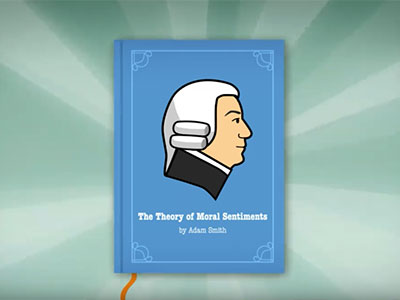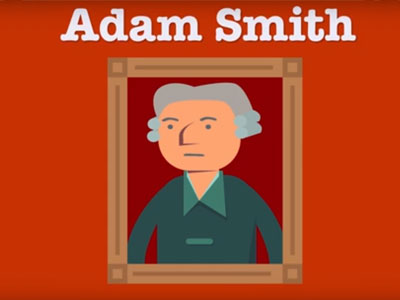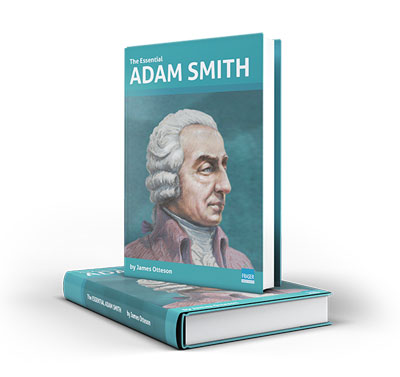by James R. Otteson
Adam Smith was born in 1723 in Kirkcaldy, Scotland. Smith was one of the principals of a period of astonishing learning that has become known as the Scottish Enlightenment, which included groundbreaking innovations in everything from medicine to geology to chemistry to philosophy to economics. Smith is the author of two published books: The Theory of Moral Sentiments (TMS), in 1759, and An Inquiry into the Nature and Causes of the Wealth of Nations (WN), in 1776. TMS brought Smith considerable acclaim during his lifetime and was soon considered one of the great works of moral theory—impressing, for example, Charles Darwin (1809–82), who in his 1871 Descent of Man endorsed and accepted several of Smith’s “striking” conclusions. And TMS went through fully six revised editions during Smith’s lifetime. Yet since the nineteenth century, Smith’s fame has largely rested on his second book, which, whether judged by its influence or its greatness, must be considered one of the most important works of the second millennium.
Not many details of Smith’s boyhood are known. He was born on the 5th of June and was an only child. His father, also named Adam Smith, died shortly before he was born. In his 1793 Account of the Life and Writings of Adam Smith, LL.D., Smith’s student Dugald Stewart reports that Smith’s “constitution during infancy was infirm and sickly, and required all the tender solicitude of his surviving parent. She was blamed for treating him with an unlimited indulgence; but it produced no unfavourable effects on his temper or his dispositions” (Smith, 1982a: 269). Perhaps one anecdote from Smith’s childhood bears repeating. Margaret, Smith’s mother, would regularly take him to Strathenry, about seven miles northwest of Kirkaldy, to visit her brother, Smith’s uncle. On one visit, when the wee Smith was but three years old, he was playing in front of his uncle’s house and was kidnapped by a passing group of “gypsies.” The alarm was raised and the kidnappers were discovered and overtaken in the nearby Leslie wood, whereupon the wailing toddler was safely returned to his family. Stewart writes that Smith’s uncle, who recovered Smith, “was the happy instrument of preserving to the world a genius, which was destined, not only to extend the boundaries of science, but to enlighten and reform the commercial policy of Europe” (Smith, 1982: 270).
Smith matriculated at the University of Glasgow in 1737 at the age of fourteen and in 1740 was elected as a Snell exhibitioner at Balliol College, Oxford. Smith was apparently not impressed with the quality of instruction at Oxford, however. As he wrote years later in WN, “In the university of Oxford, the greater part of the public professors have, for these many years, given up altogether even the pretence of teaching” (WN: 761). Smith was able to make good use of the libraries at Oxford, however, studying widely in English, French, Greek, and Latin literature. He left Oxford and returned to Kirkcaldy in 1746.
In 1748, at the invitation of Henry Home Lord Kames (1696–1782), Smith began giving in Edinburgh “Lectures on Rhetoric and the Belles Lettres,” focusing on literary criticism and the arts of speaking and writing well. It was during this time that Smith met and befriended the great Scottish philosopher David Hume (1711–76), who was to become Smith’s closest confidant and greatest philosophical influence. Smith left Edinburgh to become Professor of Logic at the University of Glasgow in 1751, and then Professor of Moral Philosophy in 1752. The lectures he gave at Glasgow eventually crystallized into The Theory of Moral Sentiments, which was published to great acclaim in 1759.
In 1763 Smith resigned his post at Glasgow to become the personal tutor of Henry Scott, the Third Duke of Buccleuch, whom Smith then accompanied on an eighteen-month tour of France and Switzerland. During these travels with the young Duke, Smith met Voltaire (1694–1778), on whom Smith apparently made quite an impression: Voltaire later wrote, “This Smith is an excellent man! We have nothing to compare with him, and I am embarrassed for my dear compatriots” (Muller, 1993: 15). Smith also met François Quesnay (1694–1774), Jacques Turgot (1727–81), and others among the so-called French Physiocrats, who were arguing for a relaxation of trade barriers and generally laissez-faire economic policies. Although Smith had already been developing his own similar ideas, conversations with the Physiocrats no doubt helped him refine and sharpen them. In 1767, Smith returned to Kirkcaldy to care for his ailing mother and to continue work on what would become his Wealth of Nations. During this time he was supported by a generous pension from the Duke of Buccleuch, enabling him to focus on his scholarly work. It was widely known that the celebrated author of TMS was working furiously on a new book, and the ten years he labored on it raised expectations high indeed. Finally, at long last, Smith’s magnum opus was published on March 9, 1776.
Smith remained in Kirkcaldy until 1778, when he became Commissioner of Customs in Edinburgh. During the decade or so that he spent in Kirkcaldy, and then thereafter when he was in Edinburgh, Smith spent a great deal of time visiting with and entertaining friends, among whom he counted Irish Catholic philosopher and statesman Edmund Burke (1729–97), the chemist Joseph Black (1728–99), the geologist James Hutton (1726–97), the mechanical engineer James Watt (1736–1819), Prime Minister Frederick (Lord) North (1732–92), and Prime Minister William Pitt the Younger (1759–1806). He also took active roles in learned organizations like the Oyster Club, the Poker Club, and the Select Society, the last of which included among its members William Robertson (1721–1793), David Hume, James Burnett Lord Monboddo (1714–99), Adam Ferguson (1723–1816), and Lord Kames. In 1783, Smith was a founding member of the Royal Society of Edinburgh, which exists still today as Scotland’s premier national academy of science and letters. Having previously served as the University of Glasgow’s Dean of Arts (1760) and Vice-Rector (1761–63), in 1787 he was elected Lord Rector of the university, a post he held until 1789.
During his years in Edinburgh, Smith extensively revised both TMS and WN for new editions. In 1785, he wrote to Le Duc de La Rochefoucauld that “I [Smith] have likewise two other great works upon the anvil; the one is a sort of Philosophical History of all the different branches of Literature, of Philosophy, Poetry and Eloquence; the other is a sort of theory and History of Law and Government” (Smith, 1987: 248). Neither of these projects was ever published, however. In the days before he died, Smith summoned his friends Black and Hutton to his quarters and asked that they burn his unpublished manuscripts, a request they had resisted on previous occasions. This time Smith insisted. They reluctantly complied, destroying sixteen volumes of manuscripts. It is probable that Smith’s philosophical history of literature, philosophy, poetry, and eloquence, and his theory and history of law and government were among the works that perished in that tragic loss.
Adam Smith died in Edinburgh on 17 July 1790 and is buried in the Canongate cemetery off High Street in Edinburgh.
Listen In
Listen to the Essential Scholars Explained podcast with host Rosemarie Fike in conversation with the author, James Otteson to discuss the work, life, and ideas of Adam Smith.

Adam Smith—Through Sympathy There is Progress
James R. Otteson, Professor of Business Ethics at the University of Notre Dame and co-author of The Essential Adam Smith, joins host Rosemarie Fike to discuss Smith’s concept of sympathy, and how paying attention to the feedback our behaviours elicit from others is what enables progress and change within society.
Adam Smith part 2: Why Care? It’s Only Natural
James R. Otteson, Professor of Business Ethics at the University of Notre Dame and co-author of the Essential Adam Smith, joins host Rosemarie Fike to discuss Smith’s perennial insights, including how human engagement naturally presents itself as opportunities for cooperation, and the ways in which the free-market can be a vehicle for this.
Download the Book
Get a digital copy of the book. Choose the version you prefer below.
Explore the Book
Chapter by chapter summary of the book.
-

Chapter 1
What is Political Economy?
The discipline we know today as “economics” began as “political economy” in the eighteenth century. The early political economists, including Adam Smith and David Hume, wanted to adapt a Newtonian scientific methodology to the study of human behavior and human society, for two principal and connected purposes: first, to discover, from history and empirical observation, regular patterns of behavior that could be systematized and therefore explained and understood; and second, to use those discovered patterns as empirical bases from which to make recommendations about institutional reform. They reasoned that if we could understand how human social institutions work, then perhaps we can understand what the moral, political, economic, and cultural institutions are that conduce to human prosperity—and, of course, which do not.
-
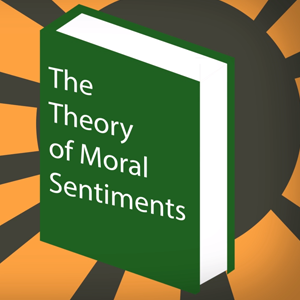
Chapter 2
Sympathy, moral sentiments, and the impartial spectator
Adam Smith’s first book was The Theory of Moral Sentiments (TMS), first published in 1759. It went through six editions in his lifetime, all of them revised by him, with the sixth and final edition coming out shortly before he died in 1790. TMS is based on lectures Smith had been giving regularly at the University of Glasgow beginning in 1752. TMS quickly established Smith as a leading moral philosopher, both in Britain and on the European continent, and for the rest of Smith’s life—and for some time afterwards—it was one of the single most influential books of moral philosophy. The great philosopher Immanuel Kant (1724–1804), for example, was deeply influenced by Smith’s TMS. He went so far as to call Smith his “Liebling,” or “favorite.” Why did TMS have such a pronounced effect?
-

Chapter 3
The solitary islander and moral objectivity
We saw in the previous chapter that Smith believes our moral sentiments develop over time by an almost evolutionary process that depends on interactions with others. There are two other important elements of Smith’s argument that will fill out his account of the origins of human morality.
-

Chapter 4
Justice and beneficence
In his 1759 Theory of Moral Sentiments, Adam Smith divides moral virtue into two broad categories: “justice” and “beneficence.” Smith describes “justice” as a “negative” virtue, meaning that to fulfill it we must merely refrain from injuring others. By contrast, “beneficence” is a “positive” virtue, meaning that to fulfill it we must engage in positive action to improve others’ situations. Beneficence includes for Smith things like charity, generosity, and friendship, things that inspire gratitude in the beneficiaries of our actions. Justice, on the other hand, requires that we do not harm or injure others; if we breach justice, then we inspire resentment in those we hurt.
-

Chapter 5
The marketplace of morality
As we saw in Chapter 1, Adam Smith was first and foremost a moral philosopher. In his Theory of Moral Sentiments, he wanted to understand how human beings come to have the moral sentiments they do, and how they form the moral judgments they do. We saw in the previous three chapters that Smith described a process by which individuals develop moral sentiments over time, through interaction with others, and based on the experiences they have watching others judge and perceiving being judged themselves. In the Introduction, I raised the historical and scholarly issue known as the “Adam Smith Problem,” which alleges a rift between the account of morality Smith gives in TMS, on the one hand, and the seemingly different account of political economy Smith gives in his Wealth of Nations, on the other. Can the two accounts be reconciled? I argued in Chapter 1 that both accounts could be reconciled by a proper understanding of Smith’s “political economy” project. In this chapter, let me lay out how the projects of Smith’s two books go together.
-

Chapter 6
The division of labor
Adam Smith’s An Inquiry into the Nature and Causes of the Wealth of Nations was published on March 9, 1776. It had been in the works for over a decade, and Smith—who was by now the celebrated author of the highly acclaimed 1759 Theory of Moral Sentiments—found himself the object of a great deal of anticipation. Th e leading thinkers of the day knew Smith had been working on a magnum opus, and they had heard hints and suggestions about what might be in it. But he had been working on it so long that the anticipation had grown to worrying heights, since those who had been so impressed by TMS began to worry that its author could not equal his accomplishment in his first book.
-

Chapter 7
Smithian political economy
We saw in the previous chapter that Smith believed the key to increasing prosperity was the division of labor. He argued that specialization would lead to increasing production, which leads to decreasing prices, which in turn leads to increasing standards of living. We also saw that he thought this story of prosperity could ensue only in a “well-governed society,” which for him is one that, whatever else is the case, has “an exact administration of justice.” In Chapter 10, we will look more specifically at the role Smith believes the government should play in society. But can we say a bit more about how Smith thinks prosperity is generated? What, for him, are the causes of the wealth of nations?
-

Chapter 8
The invisible hand
As we saw in the previous chapter, Adam Smith’s political economy is based on a chain of three arguments. The first we called the Economizer Argument, or the claim that each person naturally seeks out the most economical use of the resources available to him to achieve his goals, whatever they are. Whatever one’s goals, one wants to achieve them as efficiently as possible. Smith’s claim is that no one needs to tell us to do this: we are psychologically constructed, as it were, to do so already. The second argument is the Local Knowledge Argument, which has a couple of steps. First is the claim that people tend to know their own goals and purposes, as well as opportunities and available resources, better than others. Next is the claim that in order to use resources wisely, decisions about how to use them must be based on this knowledge of people’s goals, purposes, opportunities, and resources
-

Chapter 9
Self-interest, equality, and respect
In the last two chapters we saw that, according to Adam Smith, in a “well-governed society” (which for him meant one that protects his “sacred” “3 Ps” of person, property, and promise) each of us would naturally seek out ways to achieve our own ends by becoming “mutually the servants of one another” and thereby would benefit others even as we seek to benefit ourselves. According to Smith, the task of the political economist is to conduct empirical, historical investigations to discover what the policies and institutions are that would enable “universal opulence” and “general plenty.”
-

Chapter 10
The role of government
One might be surprised to learn that Adam Smith did not advocate or rely on a theory of natural law or natural rights. He had read his John Locke (1632–1704), of course, and the surviving students’ notes from the lectures on jurisprudence he gave at the University of Glasgow—Smith’s own lecture notes do not survive—record that Smith extensively discussed Locke’s theory of natural law and natural rights. But when it came to Smith’s own discussion of and justification for the proper role of government in human life, natural law and natural rights play no role. Similarly, Smith gave us no overt theory of property, let alone private property. So unlike Locke—and the American founding fathers, many of whom read Smith—Smith does not argue that the government’s job is to protect our natural rights to “life, liberty, and estate” (Locke) or to protect our “unalienable rights” to “life, liberty, and the pursuit of happiness” (Jefferson in the Declaration of Independence).
-

Chapter 11
Government interventions in the economy?
We saw in the previous chapter that Smith argues for a negative, defense only (or NDO) conception of justice, which seems to entail that the government’s primary, perhaps only, job is to protect us against invasion of what he articulates in TMS as our “3 Ps”: our persons, our property, or our voluntary promises (TMS: 84). That is consistent with the first two duties of government he articulates in WN, namely, protection from foreign invasion and protection from domestic invasion. But note what Smith argues is the third and final duty of government: “the duty of erecting and maintaining certain publick works and certain publick institutions, which it can never be for the interest of any individual, or small number of individuals, to erect and maintain; because the profit could never repay the expence to any individual or small number of individuals, though it may frequently do much more than repay it to a great society” (WN: 687–8). Has Smith here opened the door to a more interventionist government than his NDO conception of justice seemed to entail?
-
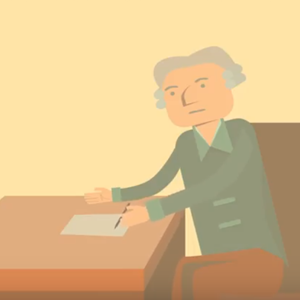
Chapter 12
Final assessment
We have now come to the conclusion of the main elements of Adam Smith’s thought. We have covered everything from who he was, to what his conception of the nature and purpose political economy is, to his moral theory, to the role he thinks the desire for mutual sympathy of sentiments plays in the development of our moral standards, to the connection between his Theory of Moral Sentiments and Wealth of Nations, to his explanation of what wealth is and what its causes are, to his conception of and distinction between justice and beneficence, and to the role he believes government should play in our lives. What remains? We have yet to off er a final assessment of Smith’s work and importance.
About the Author

James R. Otteson
James R. Otteson, Senior Fellow at the Fraser Institute, is John T. Ryan Jr. Professor of Business Ethics and Faculty Director of the Business Honors Program in the Mendoza College of Business at the University of Notre Dame, and a Senior Scholar at The Fund for American Studies. He received his BA from the Program of Liberal Studies at the University of Notre Dame and his PhD in philosophy from the University of Chicago. He specializes in business ethics, political economy, the history of economic thought, and eighteenth-century moral philosophy. He has taught previously at Wake Forest University, New York University, Yeshiva University, Georgetown University, and the University of Alabama. Prof. Otteson’s books include Adam Smith’s Marketplace of Life (Cambridge, 2002), Actual Ethics (Cambridge, 2006), Adam Smith (Bloomsbury, 2013), The End of Socialism (Cambridge, 2014), Honorable Business: A Framework for Business in a Just and Humane Society (Oxford, 2019), and The Essential David Hume (Fraser Institute, 2021). His latest books include Seven Deadly Economic Sins (Cambridge, 2021); and Should Wealth Be Redistributed? A Debate (with Steven McMullen; Routledge, 2022).
Additional Resources
The links below will take you to other websites and resources where you can learn more about Adam Smith, his theories, his impact on modern economic thought, and access his writings.
The links below will take you to other websites and resources where you can learn more about Adam Smith, his theories, his impact on modern economic thought, and access his writings.
A short overview of Smith's life and writings
From the Foundation for Economic Education, this overview of Smith was written by Richard M. Ebeling, Professor of Ethics and Free Enterprise Leadership at The Citadel.
Adam Smith Works
A project of Liberty Fund, this website includes Adam Smith's ideas, books, educational resources, and a portal that collects ongoing work. It also includes Adam Smith's famous example of "natural liberty".
Talking Adam Smith on "The World Show"
From the Foundation for Economic Education, FEE President Lawrence Reed joins host Bob Scully on Canada’s “The World Show” to focus on Adam Smith and his importance to the world as an economic thinker.
Overview of Smith’s writings and theories from the Concise Encyclopedia of Economics
The Concise Encyclopedia of Economics is found on the website of the Library of Economics and Liberty.
Overview of Smith's Moral and Political Philosophy
From the Stanford Encyclopedia of Philosophy, Samuel Fleischacker, Professor of Philosophy at the University of Illinois-Chicago, provides an overview of Smith’s moral and political philosophy.
The Adam Smith Institute: The Importance of Adam Smith
The Adam Smith Institute discusses Smith’s impact and provides a link to download Eamonn Butler's Condensed Wealth of Nations, which includes a section on The Theory of Moral Sentiments.
A collection of articles examining Smith's theories through a libertarian lens
From Libertarianism.org, a resource on the theory and history of liberty.
Adam Smith: An Enlightened Life
At a CATO Book Forum, Nicholas Phillipson, author of Adam Smith: An Enlightened Life, reconstructs Smith’s intellectual ancestry and formation, of which he gives a radically new and convincing account. The event also features comments from James R. Otteson, author of Adam Smith’s Marketplace of Life.
Biography: Life of Adam Smith
From Liberty Fund’s online Library of Liberty, the classic Life of Adam Smith by John Rae is a late-19th century biography of Adam Smith based upon research undertaken at the University of Glasgow, the Council of the Royal Society of Edinburgh (the Hume Correspondence), and the University of Edinburgh.
Selection of essays by Adam Smith
From Liberty Fund’s Online Library of Liberty, a collection of key extracts by, and essays and study guides about Adam Smith.
Documentary: The Real Adam Smith
From the Free To Choose Network, In this two-hour, two-part documentary, Swedish author, commentator and Cato Senior Fellow Johan Norberg explores Adam Smith’s life, his ideas about morality and economics, and how the concepts he discussed in his books and lectures are still relevant today.
Russ Roberts: Adam Smith's Surprising Guide to Happiness
From ReasonTV, Russ Roberts sat down with Reason's Nick Gillespie to talk about Adam Smith's relevance in both economic and moral arenas, the hubris of contemporary economists and the politicians who rely on them, the transformation of work from drudgery to a form of self-actualization, and how Adam Smith just might help you live a happy life.
Russ Roberts: How Adam Smith Can Change Your Life
From the CATO Institute, author and economist Russ Roberts discusses his book How Adam Smith Can Change Your Life: An Unexpected Guide to Human Nature and Happiness. Adam Smith’s The Theory of Moral Sentiments is often neglected and Roberts argues that it’s an important and valuable guide to important parts of our lives.
The School of Life: Adam Smith
The School of Life provides a brief overview and video detailing Adam Smith’s main theories as well as Smith’s ideas about how human values can be reconciled with the needs of businesses.
Economic Ideas of Adam Smith
Richard M. Ebeling, the BB&T Distinguished Professor of Ethics and Free Enterprise Leadership at The Citadel, provides a biographical overview of the economic ideas of Smith. This article is well-written and easily understood, making it a pleasant and informative read.
Adam Smith on Public Policy
Paul Mueller, an economist at The King’s College, explores how Adam Smith’s ideas relate to contemporary public policy challenges in this four part series.
Adam Smith and Human Flourishing
Ryan P. Hanley, Mellon Distinguished Professor of Political Science at Marquette University and former president of the International Adam Smith Society, explores Smith’s teachings on the relationship between economic freedom and human flourishing. This article is part of a broader series on economic liberty and human happiness presented by the American Economic Institute.
Ludwig von Mises on Adam Smith
An introduction to a 1952 edition of The Wealth of Nations written by the 20th century economist Ludwig von Mises in defense, in critique, and in celebration of Adam Smith.
Morals in Liberal Society
Jerry Evensky, Associate Professor of Economics and Laura J. and L. Douglas Meredith Professor for Teaching Excellence at Syracuse University, delves into Smith’s Theory of Moral Sentiments to explain how morality is a key aspect of liberal societies, free peoples, and free markets.
International Adam Smith Society
The International Adam Smith Society encourages, produces, and shares research and scholarly work on Adam Smith and his thought. Beyond being a hub for academic work on Smith, they produce an annual conference dedicated to his work and sponsor The Adam Smith Review.
Adam Smith Society
A project of the Manhattan Institute, the Adam Smith Society connects students, academics, and professionals to promote Smith’s thinking about the moral, social, and economic benefits of economic freedom. Their website contains links to relevant articles, books, events, and multimedia.
Economist Podcast: Adam Smith Today
The Economist’s Anne McElvoy interviews several Smith experts, including Dr. Jesse Norman, a UK Conservative MP and author of Adam Smith: What He Thought and Why It Matters (2018) about how Adam Smith’s ideas are ever more relevant and valuable in today’s political economy.
Suggestions for further reading
From the peer-reviewed Internet Encyclopedia of Philosophy, Jack Weinstein, Professor of Philosophy at the University of North Dakota, provides an overview of Smith’s writings and a list of suggestions for further reading. The recommendations for further reading are divided into three sections. The first features works by Smith himself, the second provides a list of suggestions for a general audience, and the third part provides a list of recommendations for specialists that seek a greater depth of knowledge.
EconTalk Podcasts
EconTalk: The Theory of Moral Sentiments
Dan Klein, of George Mason University, talks with EconTalk host Russ Roberts about Adam Smith's lesser-known masterpiece, The Theory of Moral Sentiments, on the 250th anniversary of its initial publication. Klein highlights key passages and concepts of the book including its relation to The Wealth of Nations, Smith's willingness to accept "vague, loose, and indeterminate" rules rather than precise ones, Smith's criteria for assessing what is moral and what is not, and Smith's conception of justice.
EconTalk: Russ Roberts and Mike Munger on How Adam Smith Can Change Your Life
EconTalk host Russ Roberts is interviewed by long-time EconTalk guest Michael Munger about Russ's new book, How Adam Smith Can Change Your Life: An Unexpected Guide to Human Nature and Happiness. Topics discussed include how economists view human motivation and consumer behavior, the role of conscience and self-interest in acts of kindness, and the costs and benefits of judging others.
EconTalk: Dennis Rasmussen on Hume and Smith and The Infidel and the Professor
Political Scientist Dennis Rasmussen of Tufts University and author of The Infidel and the Professor talks with EconTalk host Russ Roberts about his book--the intellectual and personal connections between two of the greatest thinkers of all time, David Hume and Adam Smith.
EconTalk: Vernon Smith and James Otteson on Adam Smith
Vernon Smith and James Otteson talk with EconTalk host Russ Roberts about Adam Smith in front of a live audience at Ball State University. Topics discussed include Smith's view of human nature, the relevance of Smith for philosophy and economics today, and the connection between Smith's two books, The Theory of Moral Sentiments and The Wealth of Nations.
EconTalk: Vernon Smith on Adam Smith and the Human Enterprise
Nobel Laureate Vernon L. Smith of Chapman University talks to EconTalk host Russ Roberts about how Adam Smith's book, The Theory of Moral Sentiments has enriched his understanding of human behavior. He contrasts Adam Smith's vision in Sentiments with the traditional neoclassical models of choice and applies Smith's insights to explain unexpected experimental results from the laboratory.
EconTalk: Otteson on Adam Smith
James Otteson of Yeshiva University talks with EconTalk host Russ Roberts about Adam Smith. The conversation begins with a brief sketch of David Hume and his influence on Smith and then turns to the so-called Adam Smith problem--the author of The Wealth of Nations appears to have a different take on human nature than the author of The Theory of Moral Sentiments. Smith worked on both books throughout his life, yet their perspectives seem so different. Otteson argues that the books focus on social behavior and the institutions that sustain that behavior--market transactions in The Wealth of Nations and moral behavior in The Theory of Moral Sentiments.
The Published Works of Adam Smith
Smith: An Inquiry into the Nature and Causes of the Wealth of Nations
From the website of the Library of Economics and Liberty, this edition of Smith’s An Inquiry into the Nature and Causes of the Wealth of Nations is based on Edwin Cannan’s careful 1904 compilation of Smith’s fifth edition of the book (1789), the final edition in Smith’s lifetime.
Smith: The Theory of Moral Sentiments
From the website of the Library of Economics and Liberty, Smith’s The Theory of Moral Sentiments outlines his view of proper conduct and the institutions and sentiments that make men virtuous. In this edition, the reader will find alterations to the last Chapter of the third Section of Part I; and in the four first Chapters of Part III. Part VII brings together the greater part of the different passages concerning the Stoical Philosophy, which, in the former Editions, has been scattered about in different parts of the work.
Smith: Essays on Philosophical Subjects (1869)
From Liberty Fund’s Online Library of Liberty, Smith’s Essays on Philosophical Subjects shed considerable light on his place in the Scottish Enlightenment. Included are histories of astronomy, ancient logic, and ancient physics; essays on the “imitative” arts and the affinity between music, dancing, and poetry.
Smith: Lectures on Justice, Police, Revenue and Arms (1763)
From Liberty Fund’s Online Library of Liberty, Lectures on Justice, Police, Revenue and Arms is a collection of Smith’s lectures originally delivered at the University of Glasgow from 1762–1763, which presents his “theory of the rules by which civil government ought to be directed.”
Smith: On Free Trade (1776)
From The Best of the Online Library of Liberty, a selection from Smith’s Wealth of Nations in which he defends the idea of free trade. It is in this context that he introduces his powerful notion of “the invisible hand.”
Smith: Of the Character of Virtue (1759)
From The Best of the Online Library of Liberty, this excerpt from Smith’s The Theory of Moral Sentiments discusses the nature of virtue, in particular prudence, justice, and beneficence. He notes that although they are an integral part of human nature their emergence is either stimulated or retarded by the kinds of societies in which human beings live.
Essential Scholars is brought to you by

Fraser Institute
Institute for Economic Affairs
Institute of Public Affairs
Foundation for Economic Education
Acknowledgements
Made possible by generous grants from the Lotte and John Hecht Memorial Foundation, the John Templeton Foundation, and the Peter and Joanne Brown Foundation.









